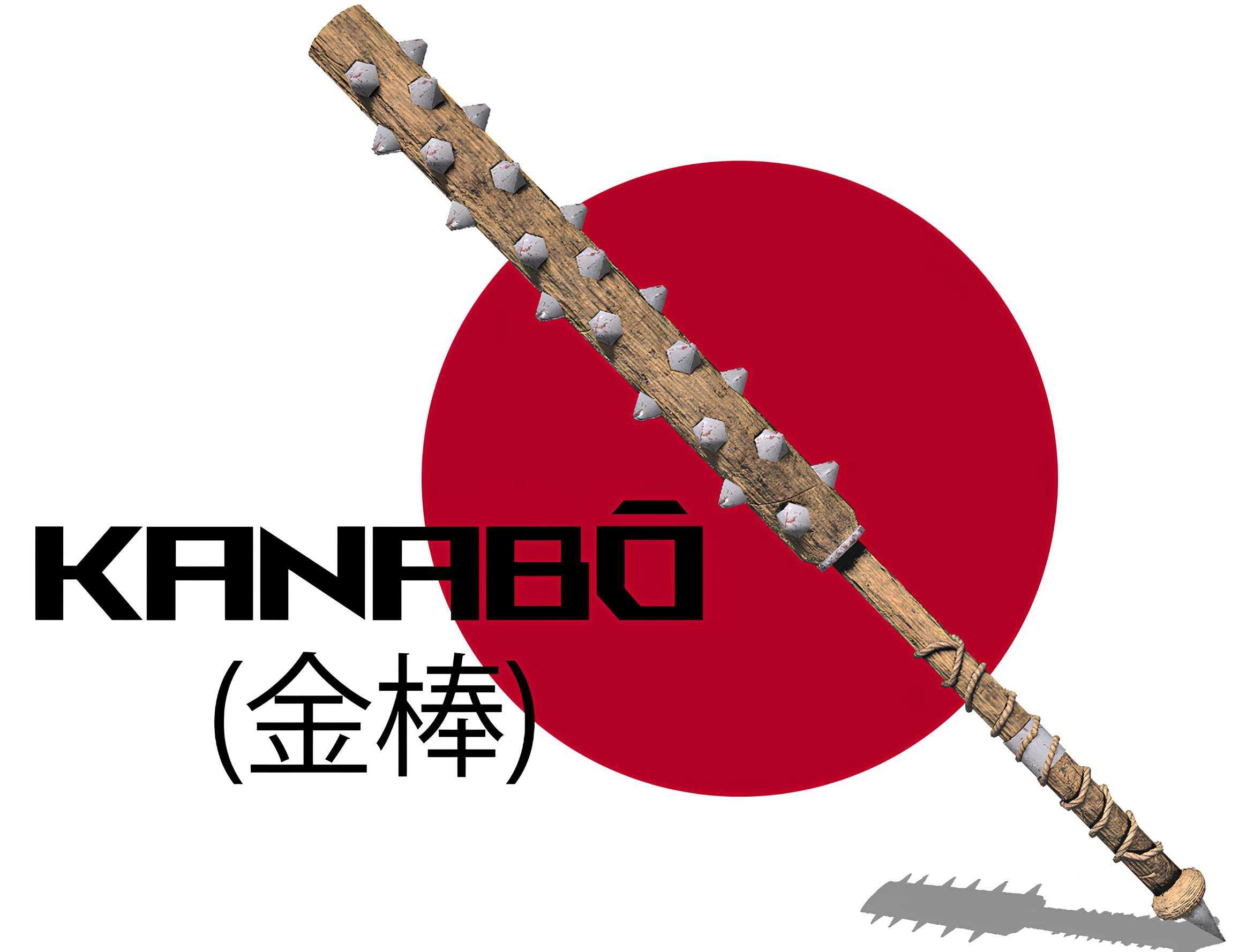Baton-like hitting weapons are common in Japan, and the “kanabō” (金棒) is one of them. This spiked or studded blunt weapon of the 14th century is literally known as the “metal club” in Japanese. It was created for the purpose of destroying armor that cannot be penetrated by swords and spears. It was mainly used by the samurai of feudal Japan. Japanese oak, chestnut, and yew were used to create the first kanabo weapons in the mid-1300s.
These two-handed clubs were between 4.6 and 6.6 feet (1.4 and 2 m) tall, with octagonal poles. According to various sources, the weight of a kanabo weapon ranged from 4.5 to 11 pounds (2 to 5 kg). However, some sources state as much as 15 to 20 lb (7-9 kg), which were either ceremonial or confused with tetsubo, a similar weapon sheathed with iron.
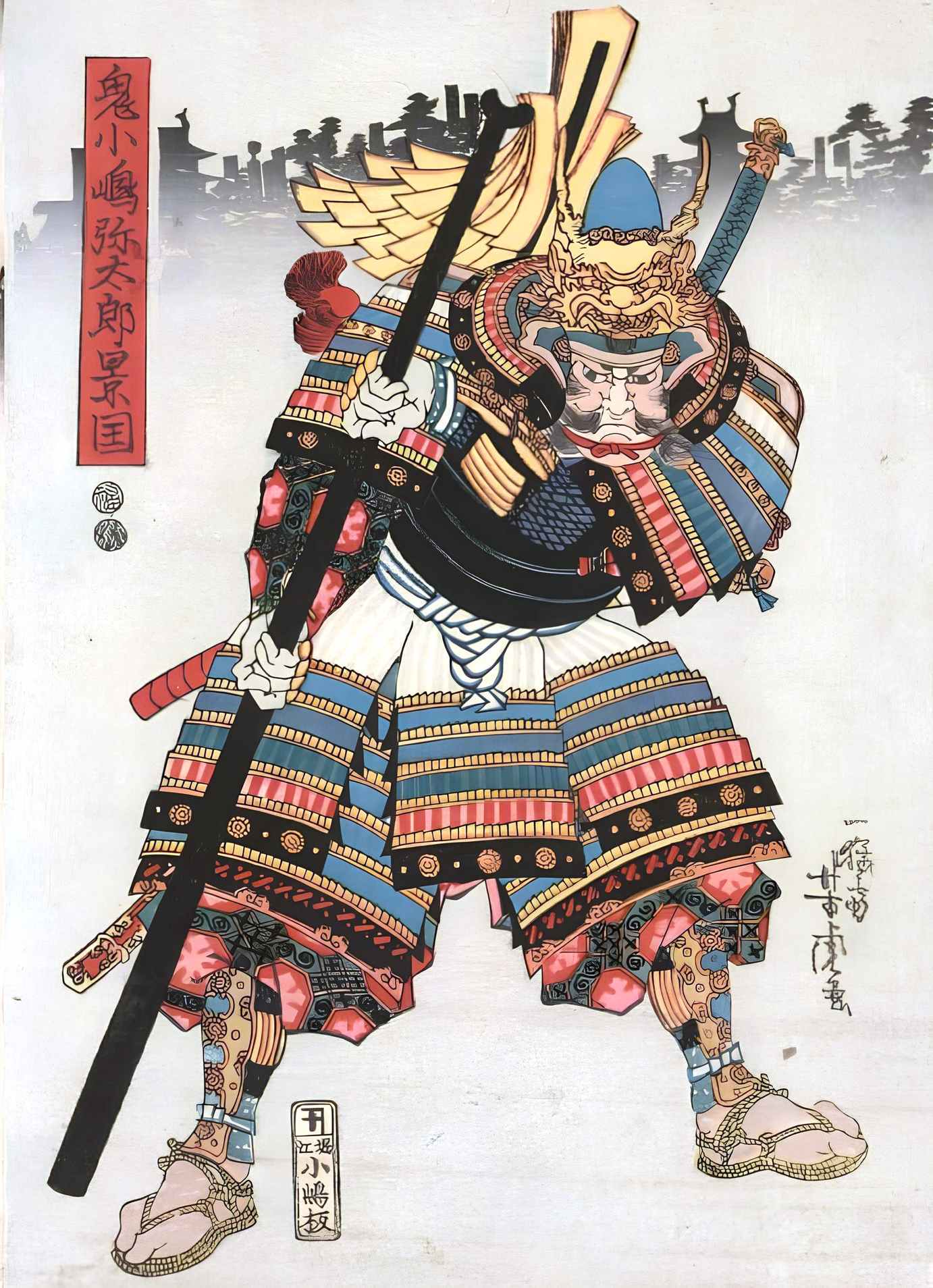
They were strengthened with square or diamond-shaped rivets and hoops called “hoshi.” This design is thought to have first emerged during the Nanboku-chō period between 1336 and 1392.
Sometime later, kanabo weapons had sheet metal or iron plates wrapped around them for reinforcement, creating what were known as “hirukanamono” and “nagafukurin,” respectively. Over time, the kanabos were made completely from iron, with an evolution from cast iron to wrought iron.
Kanabō’s History

The oldest document relating to the kanabo is from the 13th century. But considering its simplicity, the weapon was probably in use as early as the 8th century, during the Heian period.
The kanabo weapon was widely used by samurai lords and other officials in medieval Japan, and as such the weapon came to be seen as a sign of power and prestige. Bandits and martial monks (sōhei), both renowned for their brutality and prowess in battle, also employed this weapon.
The Japanese military had been using heavy weapons in combat continuously. The reason for this was that the majority of conflicts were conducted from atop a horse, where the extra weight of armor was negligible. Therefore, even with stabbing weapons, let alone blades, it was exceedingly difficult to pierce armor.
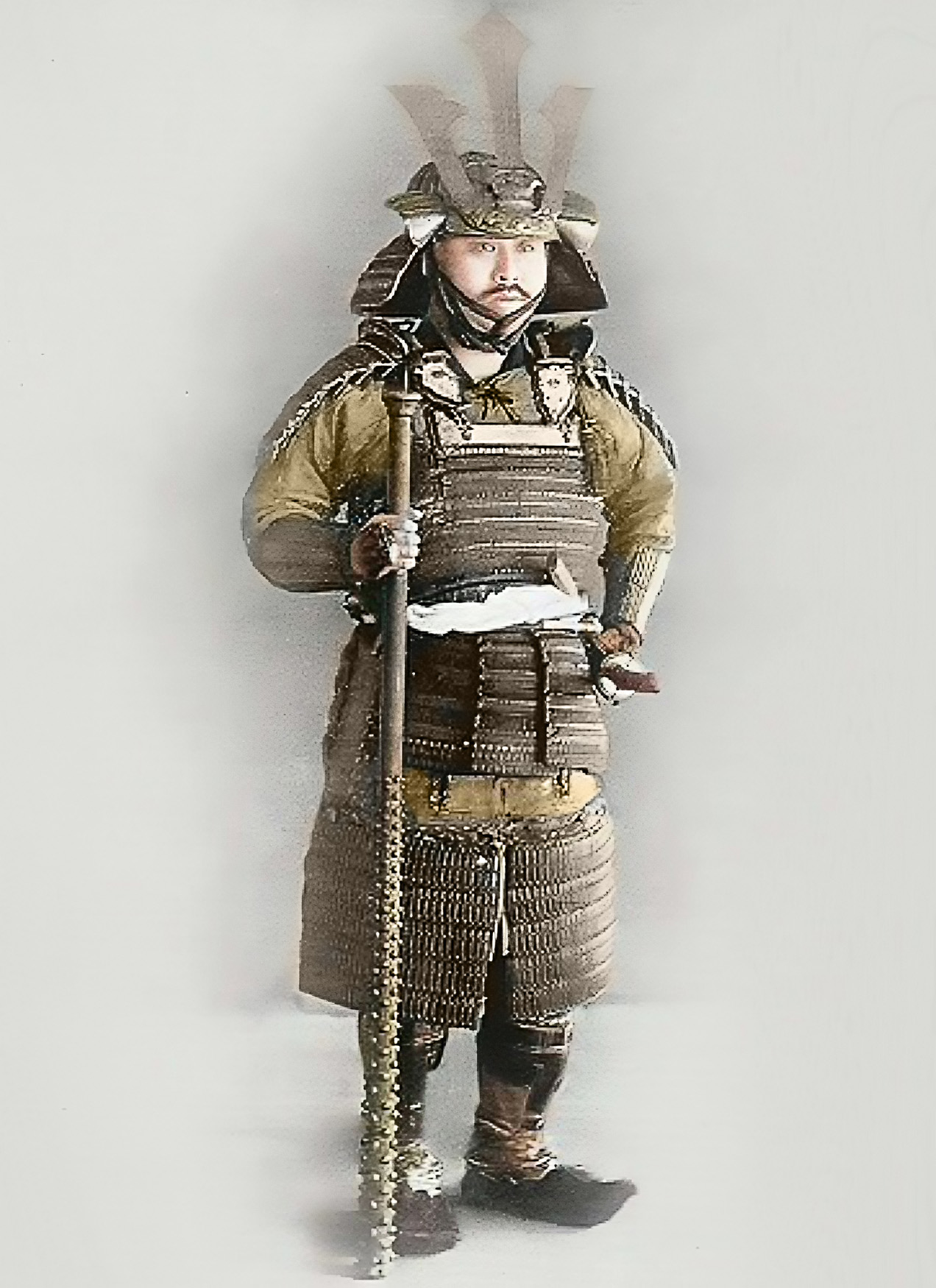
Since armor moves with the body, there were gaps at the joints, making the adversary vulnerable to harm. This led to tactics such as aiming for the neck by hitting the headpiece or cutting the joints of the armor.
But it was still too challenging to cut through armor, probably much harder than breaking through it with a well-placed blow. There were still instances in which a yari (Japanese spear) was able to break through armor.
The first lighter armors were developed during the Nanboku-chō era. However, breaking through the light armor remained challenging.
This led to the creation of weapons like the “kanabo” which were designed to strike. The weapon worked well because the arms and legs were usually vulnerable in Japanese armor.
Design of the Kanabo Weapon

The kanabo weapon was a hefty striking tool designed to cause serious damage to the target, particularly the head and chest. After being knocked off balance by the kanabo’s blow, an attacker had a better chance of killing their foe by crushing their neck or smashing their body with this weapon.
You can think of the kanabo as a giant club or mace. This blunt weapon weighed as much as 20 pounds (9 kg) due to the robust timber or metal from which it was crafted.
The weapon has a long handle for a two-handed grasp and a broad, rounder head covered in iron spikes. The tetsubo is a similar weapon to the kanabo that is made of iron.
Kanabo rods of a hexagonal or octagonal shape coated in iron plates or strengthened with iron bars were typically between 83 and 141 inches (212 and 360 cm) in length.
And kanabos of solid iron were typically around 59 inches (150 cm) in length. A species of this length weighed 4 pounds (1.8 kg). Most species were between 4.5 and 11 pounds (2 and 5 kg). Due to these numbers, the weapon could only be wielded by people with high physical strength.
Was Kanabo a Popular Weapon?
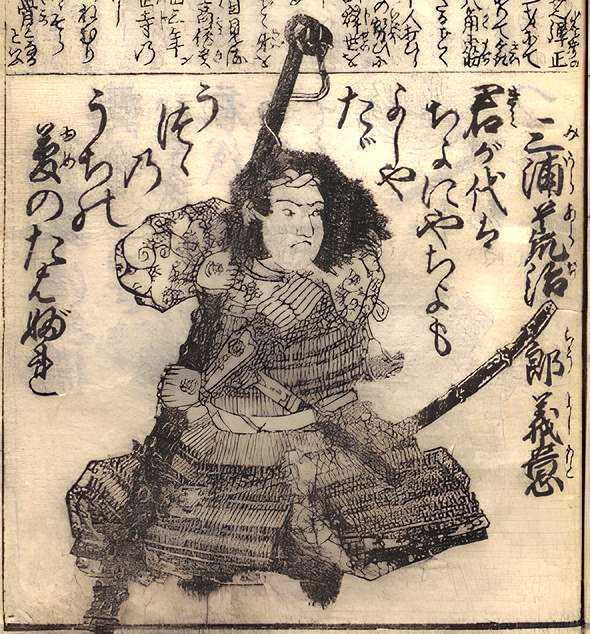
The kanabo weapon was apparently used in conflict, as evidenced by historical documents like a Japanese folding screen picture (byōbu) showing the famous 16th-century warrior Mogami Yoshiaki wielding the weapon. As a result of its sturdiness and weight, it was also fashioned into improvised assault weapons to smash through the entrances of various fortifications.
Along with the masakari (“war axe”) and great swords like ōdachi, and ōnaginata, the kanabo was another weapon that called for strong arms to handle effectively. A total of only eight instances of this weapon are recorded in the Taiheiki, a Japanese historical epic, despite its widespread usage during the Nanboku-chō period.
Within 20 years of the end of the Nanboku-chō period, the ōdachi’s reputation had already begun to wane, and by the Muromachi period (1336–1573), it was virtually extinct. Within the same timeframe, the Great Ōnaginata’s reputation had also diminished, with the smaller ōnaginata becoming more common during the Muromachi period.
In comparison to the eight instances of kanabo in the Taiheiki, ōdachi, and ōnaginata were mentioned 35 and 40 times, respectively. And these mentions were exclusive to the versions that exceeded “three shaku” (36 inches or 91 cm).
Kanabo Weapon in Folklore and Mythology
This heavy club was not just a lethal fighting instrument, but also a sign of strength and authority. For that reason, those in command would use it as a means of intimidation. The kanabo weapon plays a pivotal role in Japanese legend and tradition.
- Oni – A monster or beast with horns, pointy fangs, and unruly hair, Oni are common in traditional Japanese art. Among their arsenal of tools is a big kanabo, which they use as a primary weapon.
- Benkei – Benkei was a monk and fighter who served in the late 12th century under the renowned Japanese samurai Minamoto no Yoshitsune. He was rumored to be super muscular and a martial arts expert. He was also trained to use the heavy kanabo.
- Shuten-doji – The fabled oni Shuten-doji was said to have abducted and devoured young women from the forests near Kyoto. He was typically shown with a massive kanabo in his hands.
Kanabo Weapon and Oni (Demon)
The demon ruler Oni, who was notorious for his fury and cruelty in combat, was rumored to favor the kanabo as his weapon of choice. The reason for that is that Onis are considered extremely strong.
The Japanese saying “Oni ni Kanabō” (鬼に金棒) depicts the iconic picture of a monster, or “oni,” wielding a kanabo, a sharpened metal weapon. The proverb literally means “giving a metal rod to a demon.”
According to the ancient military record Karasu-tengu-gassen, the “Kanatsubo” was a sort of metal club used in combat in the late 15th century, and it was from this club that the kanabo supposedly evolved. “The Oni should have a Kanatsubo,” reads the chronicle.
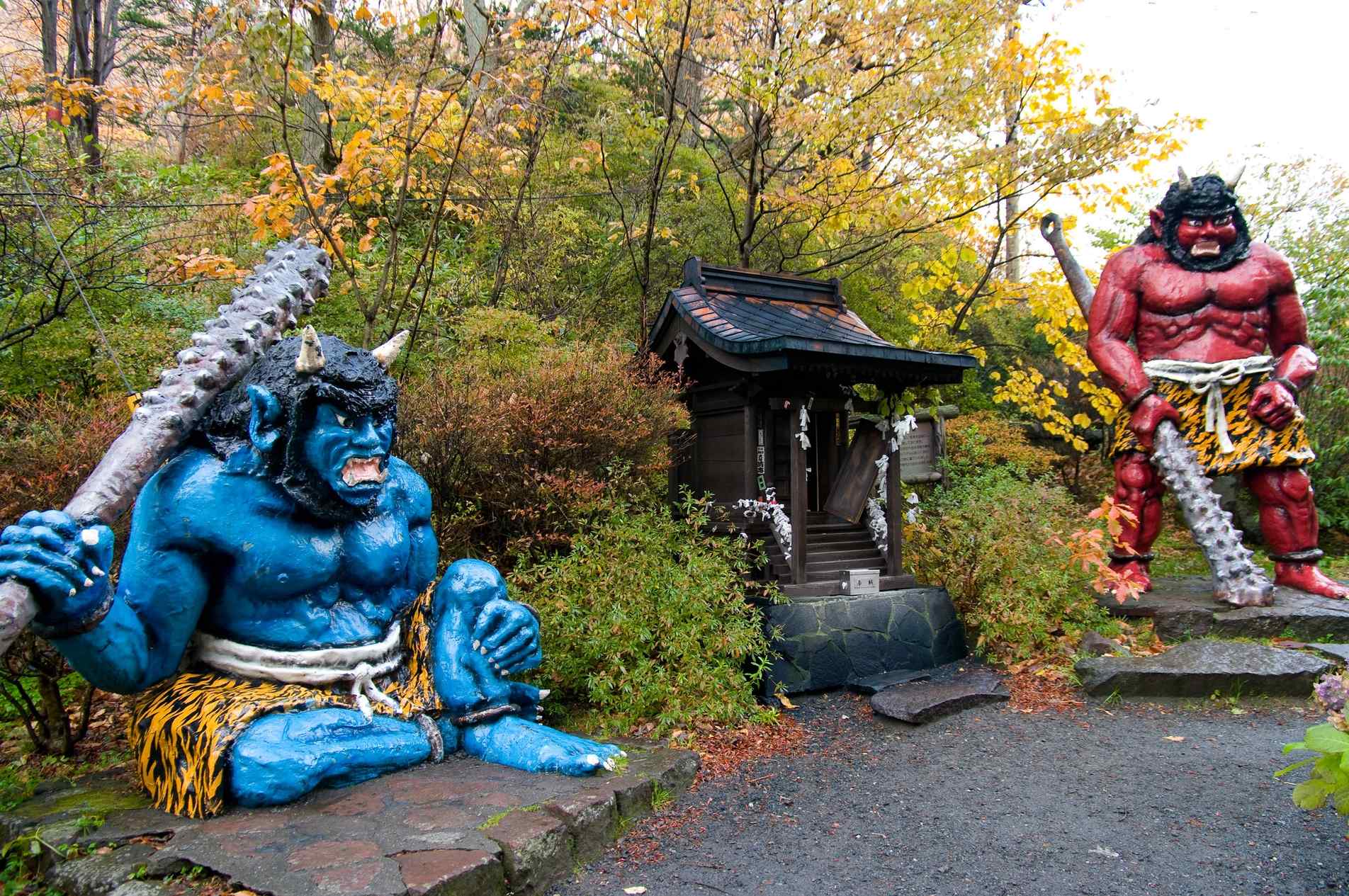
In 1645, with the publication of “Keifukusa,” the proverb “Oni ni Kanabō” made its first appearance. The Japanese also have a saying that reads “Oni ni Tetsujo” which means “An iron rod to a demon.“
The weapon’s spikes are believed to have evolved from rivets or fasteners used to connect iron plates to a hexagonal rod. The weapon was typically fashioned from a single piece of iron.
Similarly, the “Odawara Hojo-ki” records an account of a run-in with an Oni and includes a tale about an Oni and a Kanabo. A man who might have been a monk or a mountain ascetic was supposedly there in 1582, and he was standing near Nihonkindo.
Muscular and dark-skinned, he towered at around 6’6.8″ (2 meters) in height and slung what looked to be a Kanasai-bo over his shoulder. He requested the others to tell a woman who was expected to arrive later that he was harmless and was waiting for her.
Screams from the woman were later heard, and upon investigation, they uncovered a funeral ceremony. From their investigation, they deduced that the woman was a ghost, and the odd creature was an Oni from hell that was supposed to be located close to Nihonkindo.
Origin of the Kanabo Weapon
The kanabo is defined as a “metal rod” in the 6th Edition of the Kōjien dictionary. In the same entry, the weapon is also called the “Saibō” (also known as the “zaibō”).
In the dictionary, “Oni ni kin saibō” is given as a sentence and it means “a demon who is wielding a kanabo” which is from the 15th-century tale “Raven and Heron Battle Story” (Arokassenmonogatari).
The saibō was first mentioned in the 13th-century text “Kokon Chomonjū,” which describes its use by monks but not as a weapon. The “Minesōki,” an account of a crime group in Harima at the turn of the 14th century, mentions the use of a “sai-bō” several times.
Funny enough, in Japanese folklore, the saibō was seen as a stick representing the male genitalia, and it was thus referred to as “saiben-bō” or “zaifuri-bō.” Over time, the saibō progressively evolved into a form of martial art weapon.
The Japanese historian Yoshihiko Amino proposes that the first bow and arrow emerged in eastern Japan in the Jōmon period (14,000–3,000 BC). And weapons like the kanabo were invented to aim at the knees of the horses ridden by the archers. This is similar to the emergence of weapons like the inji (a slinging weapon) and ōnaginata during the medieval period.
He also implies that the kanabo was a western-style strategy weapon characterizing the battles of the Nanboku-chō period (a.k.a. the Northern and Southern Courts period).
The conflict between the Western forces, who used slinging stones and kanabo, and the Eastern forces, who used horses in combat, is what defines the time period. By utilizing slinging weapons and this heavy club, the Western forces caused trouble for the Eastern forces.
Chinese Influence on the Kanabo Weapon
During the Nanboku-chō period (1336–1392), unusual weapons like masakaris, hatchets, and kanabos began to appear alongside large swords like the ōdachi, ōnaginata, and yari.
But even in the Sengoku period (1467–1615), which succeeded the Muromachi period, they were never put to good use. So, how come these weapons were so popular from the Nanboku-chō era to the early Muromachi era?
The weapons used in China during the Kamakura period (1185–1333) and the Sui and Tang regimes in China, which had a significant impact on Japan during the Heian period (794–1185), may have served as inspiration for these novel fighting weapons, such as kanabo and yaris (“spears”).
Long spears and straight swords were standard horse equipment during the age of horse riders. Also, during the Song dynasty (960–1279), which overlapped with the Kamakura period and was ruled by foreign ethnic groups like the Jin and Yuan, there were a lot of fortress battles. This was the beginning of the age of infantry-based combat.
The yari or spear was the primary tool of war in this region. Different lengths were created for different purposes, including shorter spears for assault strikes (about six shaku, or 6 ft; 1.85 m) and longer spears for fortress defense (25 shaku, or 25 ft; 7.7 m).
Axes, hatchets, bonedas (a long-handled mace), and clubs were also widely used alongside the strategies of the period due to the impact of non-native ethnic groups.
At the end of the Heian period, Taira no Kiyomori led the trade between Japan and the Southern Song kingdom (Song). This trade continued into the Kamakura period.
In addition to the normal trade route with the Southern Song, military groups in western Japan called “pirates” with bases in the Kinki area and on islets negotiated with different towns south of the Yangtze River to get supplies of Song coins, pottery, fabrics, and other goods.
When raiding the Chinese coast, these groups of pirates, called “Wokou,” fought troops from the Song, Yuan, and Korean Goryeo with spears and a wide variety of other weapons.
As a consequence, Kyushu, a place that had strong connections to China, gave rise to the “Kikuchi yari,” or spear of Kikuchi. It also wouldn’t be shocking to find Chinese influence in the widespread use of the axe, kanabō, and kanazuchi (“hammer”) in the Taiheiki.
Weapons Similar to Kanabo
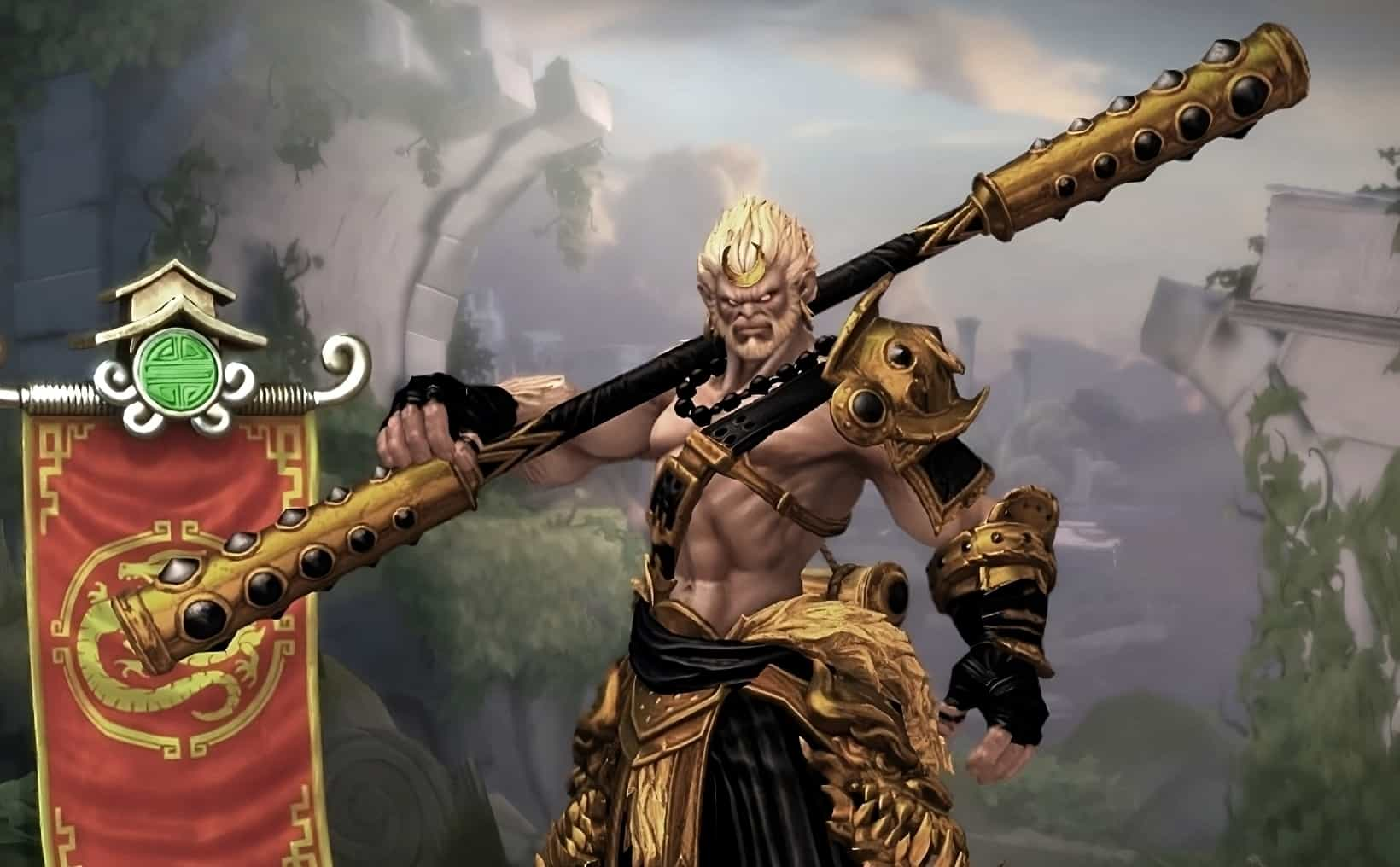
- Nyoibo – Also known as “Ruyi Jingu Bang,” it is a longer version of kanabo often made of hardwood and sometimes having studs. It is the weapon of the immortal monkey Sun Wukong, and Goku in Dragon Ball.
- Konsaibo – When compared to the kanabo, the konsaibo is very different. The iron studs gave the wood a tough and durable finish. But it still remained too bulky for use in a real conflict.
- Tetsubō – Both the tetsubo and the kanabo are metal, but the tetsubo is made of iron and is longer. Since most metal staffs were originally forged from iron, they are functionally identical.
- Ararebo – Ararebo was the one-handed, shorter version of the kanabo that was easier to use in combat. But it never became as popular as the other one due to being less powerful than its bigger brother.

- Kanemuchi (or kanamuchi) – This weapon did not have any spikes or studs. It was a long, tapering version of the kanabo and a common weapon in medieval Japan. It has been documented that some Kanemuchi reached a length of 39 inches (99 cm).
- Aribo (a.k.a. gojo or kirikobo) – One of the preferred weapons in feudal Japan was the aribo. Similar to kanemuchi, it was a long, curved, octagon-shaped, forged iron cane.
Kanabo Weapon in Popular Culture

The weapon appears in many different video games. Among the ones that feature this weapon are For Honor, Nioh 2, Blade and Sorcery, Roblox, and State of Decay 2.
The weapon is also featured in various anime series. In the Dragon Ball series, the Oni of the Enma Realm, and Janenba favor the use of kanabo. In the Naruto series, the weapon is used by Banna, Tenten, and Gatai. The weapon is also featured in Samurai Jack (2001–2017).
Kanabo Weapon Today
Martial artists and collectors alike continue to hold the kanabo in high regard. The weapon has played a significant role in Japanese history and society, from its connection with Japanese mythology to its use by the warrior elite. This two-handed blunt weapon is an intriguing tool, whether you’re a fan of martial arts or just curious about Japan’s past.
Kanabo at a Glance
Is the kanabo still used in combat today?
The kanabō is not deployed in battle anymore. Its primary function is as an ornament or showcase item for martial artists and fans.
What materials are used to make a kanabo?
The head of this club is usually tipped with iron barbs, and it is constructed of hardwood or metal.
How heavy is a kanabo?
Depending on its structure, a kanabō can weigh as much as 11 pounds (5 kg). The lightest ones were around 4.5 pounds (2 kg).
Who used the kanabo in feudal Japan?
Samurai, military monks, and even criminals all used this heavy weapon in medieval Japan.
What is the significance of the kanabo in Japanese culture?
In Japanese society, this weapon represents control and power, and it is also linked with traits like tenacity and courage.
References
- Featured Image: (3D kanabo model by Oskar “K1TT3N” Adamczyk, CC BY 4.0 / Recolored from original)
- Kogan, Daniel, and Sun-Jin Kim, 1996. Tuttle Dictionary Of The Martial Arts Of Korea, China & Japan. AbeBooks.
- Serge Mol, 2003. Classical Weaponry of Japan: Special Weapons and Tactics of the Martial Arts. Google Books.
- Don Cunningham, 2012. Samurai Weapons: Tools of the Warrior. Tuttle Publishing.


